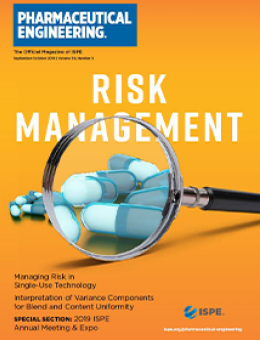
Downloads
Risk Management in Single Use Technology
Cover: Risk management is pervasive throughout the biopharmaceutical industry. It is an important factor during the implementation of new equipment or procedures into an operation. Likewise, risk management is also key when assessing the impact of changes. When doing a root cause analysis, evaluation of the risks becomes central to define the potential solutions to the problem analyzed and to eliminate the contributing cause. This article expands on a chapter addressing risk management in single-use technology in the ISPE Good Practice Guide: Single-Use Technology.
Accelerated Pharmaceutical Product Development, Registration, Commercialization, and Life Cycle CMC Lessons, Part 2
Feature: This two-part series focuses on challenges that chemistry, manufacturing, and control (CMC) development teams may encounter when a project is given accelerated development status. In this issue, Part 2 expands the discussion of considerations and themes introduced in Part 1 and presents several case studies of pharmaceutical products being approved using accelerated programs.
Patient-Centric Specification: Regulatory and Industry Progress
Feature: A plenary session entitled ”Patient-Centric Specification” (PCS) was held at the 2018 ISPE Quality Manufacturing Conference in Arlington, Virginia, to discuss the recent regulatory and industry progress on this topic. Attendees discussed the opportunities, challenges, and future directions for establishing PCSs.
2019 ISPE Annual Meeting & Expo
Special Section: This special section looks at what’s coming up at the 2019 ISPE Annual Meeting. It also features the voices of first-year Travel Grant recipients who attended last year’s Annual Meeting courtesy of the ISPE Foundation and offers a look at the 2019 Facility of the Year Award (FOYA) category winners and honorable mentions.
